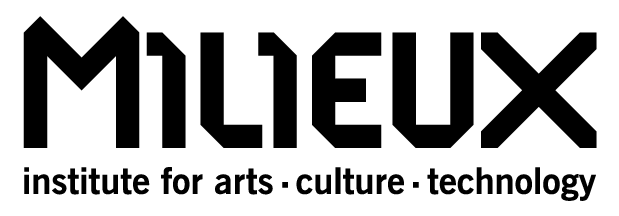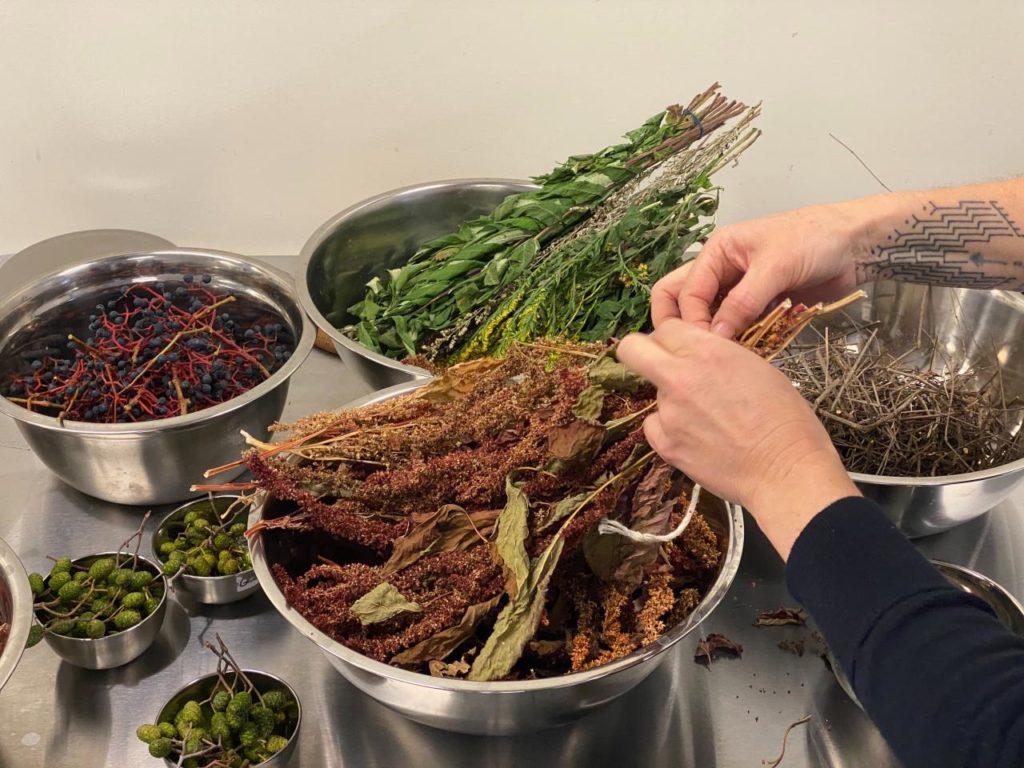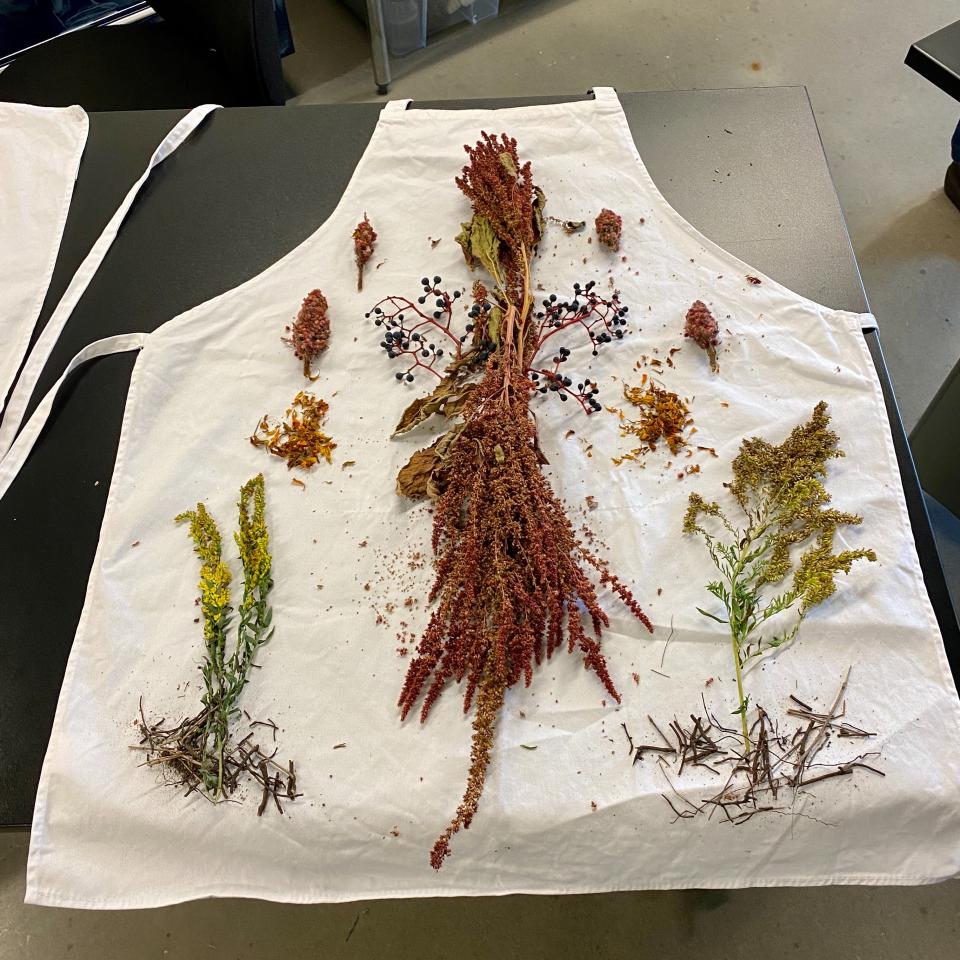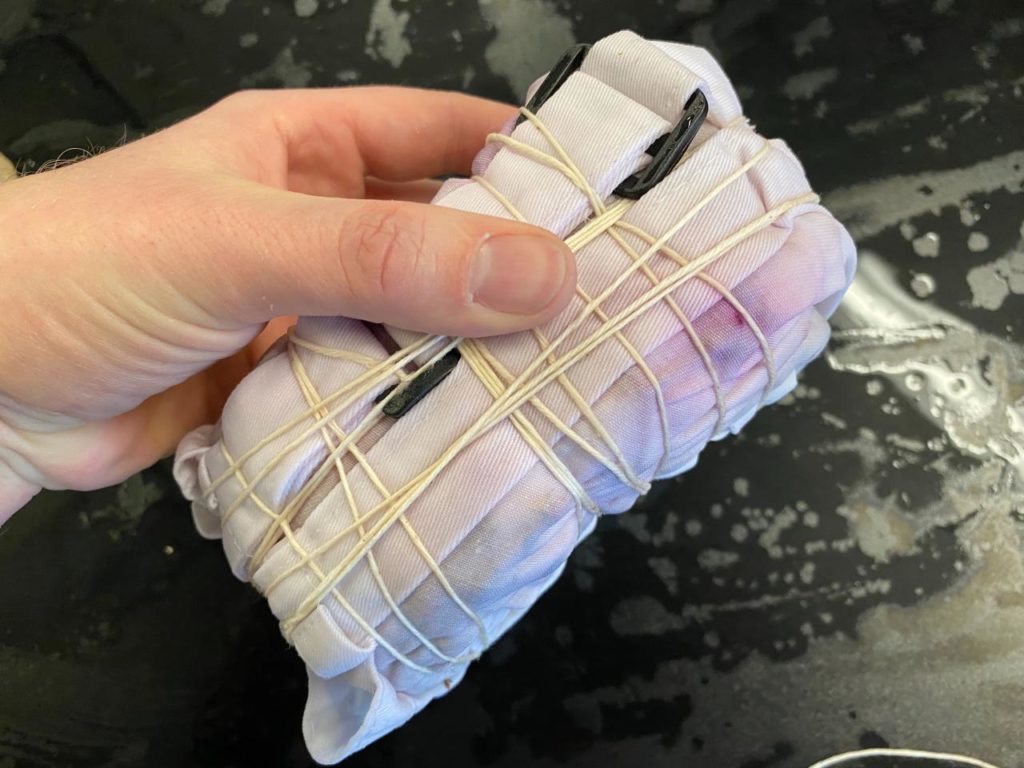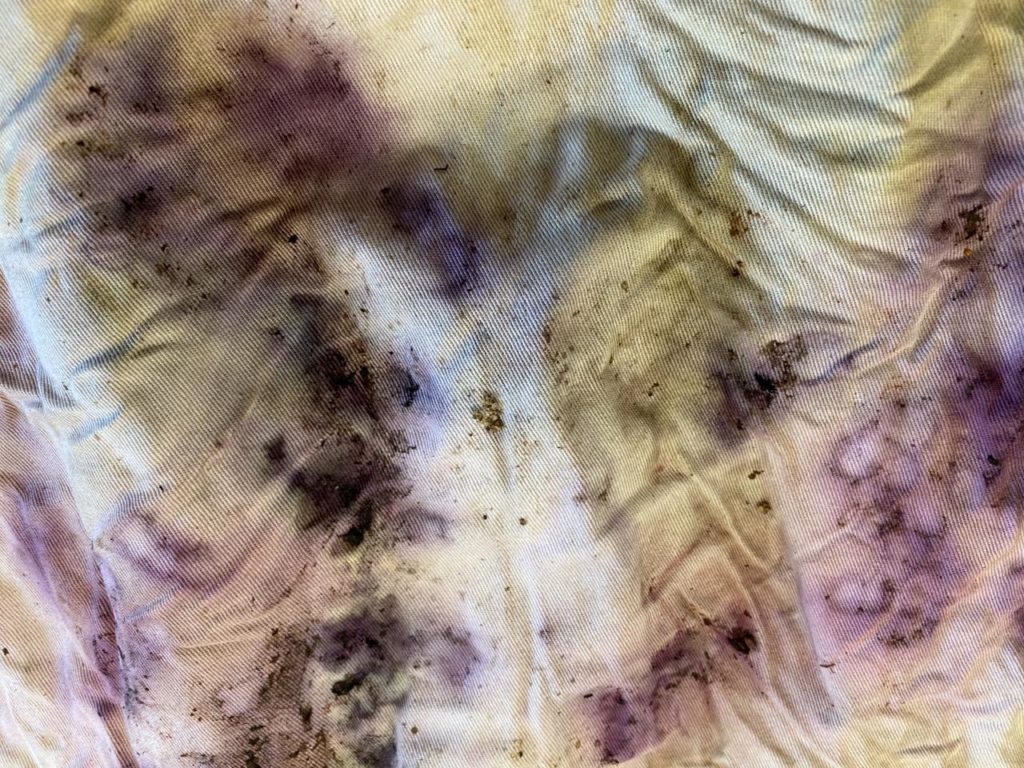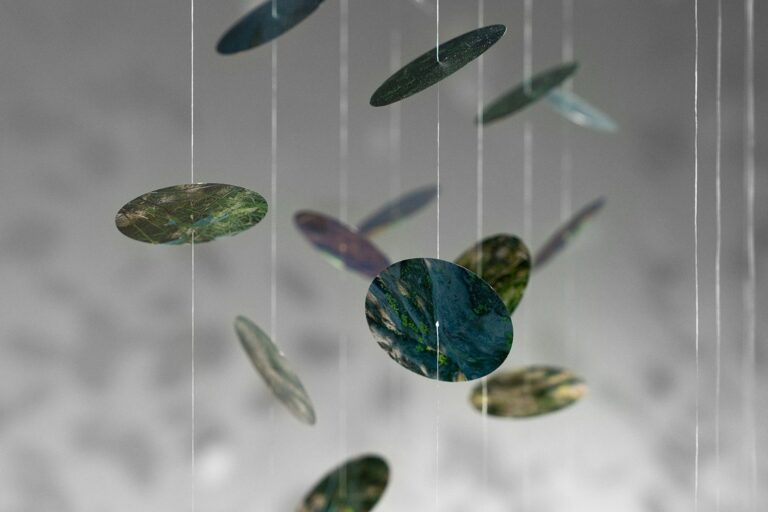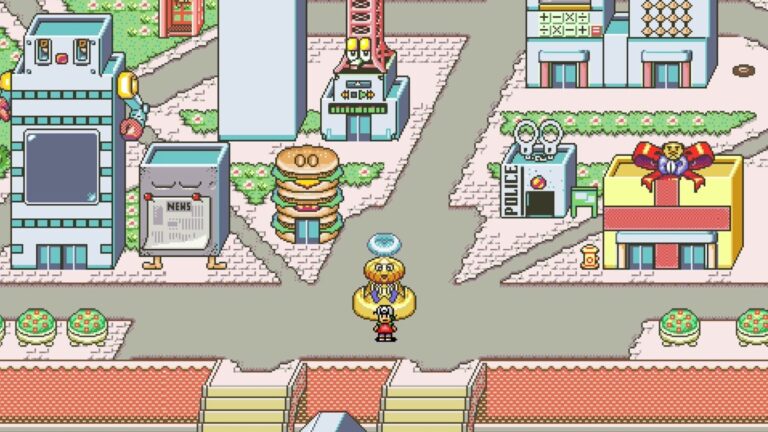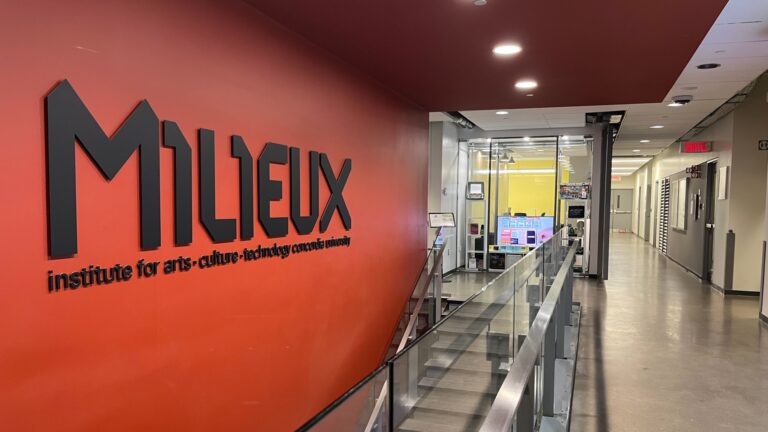Milieux is now home to the MaSH Lab. A new research space for making and experimenting with matter through all kinds of sustainable processes. As we continue to develop and expand in new directions, the creation of the MaSH Lab responds to the needs of our researchers, providing vital resources and equipment for the development of interdisciplinary remediating material research. Directed by Dr. Miranda Smitheram —Concordia University Assistant Professor and Co-Director of the Textile and Materiality Research Cluster— this space is open to all our students and faculty members curious about experimenting and learning sustainable approaches to remediating material into new forms.
“Responding to decolonial approaches and ideas around renewing relationships with matter as an assemblage of forces located within a posthuman ecology,” as Smitheram states in her recently successful FOP application, “the space provides access for development of botanical pigments, eco dyeing processes, bioremediated materials, scaffolds, and textilic forms”. The MaSH Lab is fully operational and equipped to develop nuanced processes of: “textile shredding, cutting, plant pulverizing, biological material crushing, pulp processing, and pigment extraction. These methods provide an array of techniques for reducing waste material (textile, food waste), invasive plant species, and end-of-season plants, to a base material from which they can be reconstituted into new forms.”
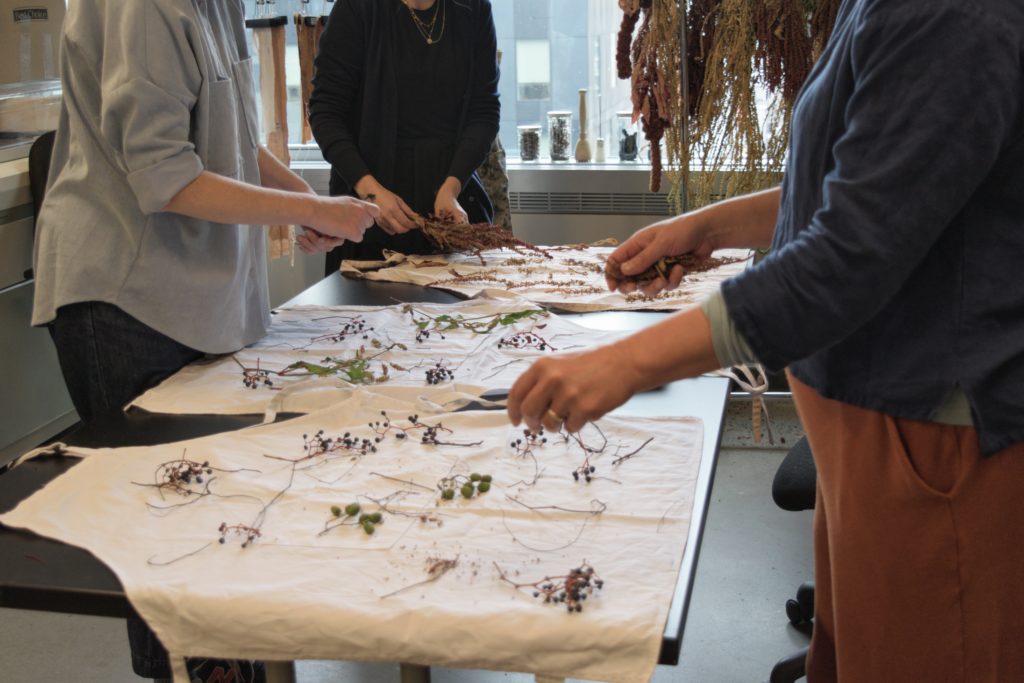
Last Friday, slowly and without fanfare, the MaSH Lab hosted its inaugural workshop, inviting participants to customize canvas-like white aprons with natural dyes. What a finer way to inaugurate the space than with a workshop to bundle dye your own apron, gearing up for the upcoming workshop season. A variety of local plants, some fresh, some gathered time ago, were on hand to choose from and make arrangements that would yield unique pigments and patterns. Like the Virginia Creeper, which sprawls all over Montréal and gives the most stunning purple colour. Or the marigold that yields rich vibrant yellows and oranges. “The types of colour we get changes with the season”, Miranda reminded participants, “which brings us in relation to the seasons and time”. There is something magical about this process. Perhaps it is the unusual ability to feel and sense the materiality of color, prior to the visual experience, triggering our imagination. Or the sheer unpredictability of the end result, as an exercise of delayed gratification (the participants had to wait all weekend to find out how their designs turned out!). For Miranda, this is “a kind reminder of temporality and impermanent change”.
This is what the first MaSH Lab’s workshop was all about: slowing down, experimenting and learning. Starting off next semester, we will be rolling out our workshop programming (spoiler: working with rust), and we welcome anyone with curiosity and interest in this area of research. So, stay tuned!
